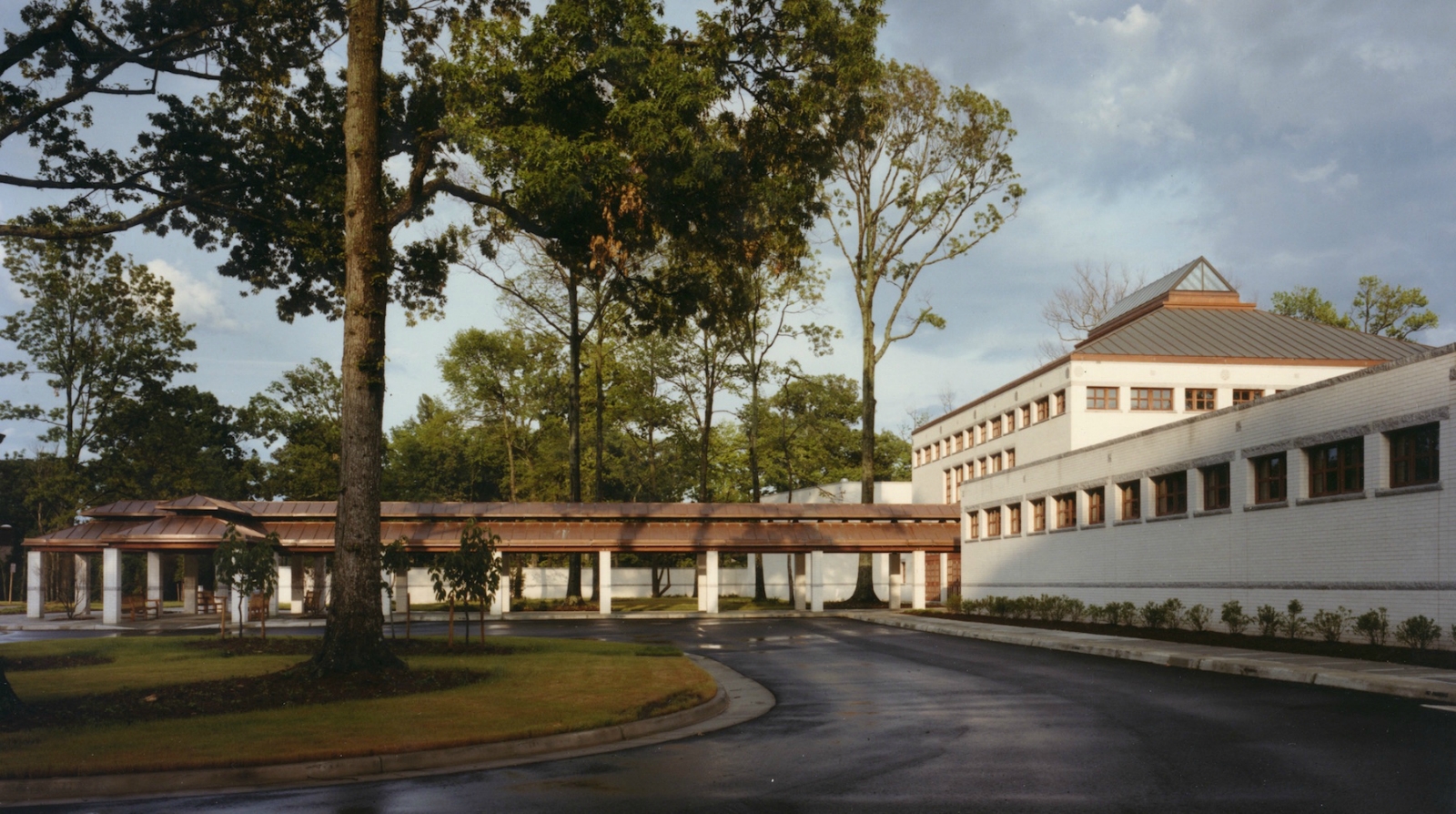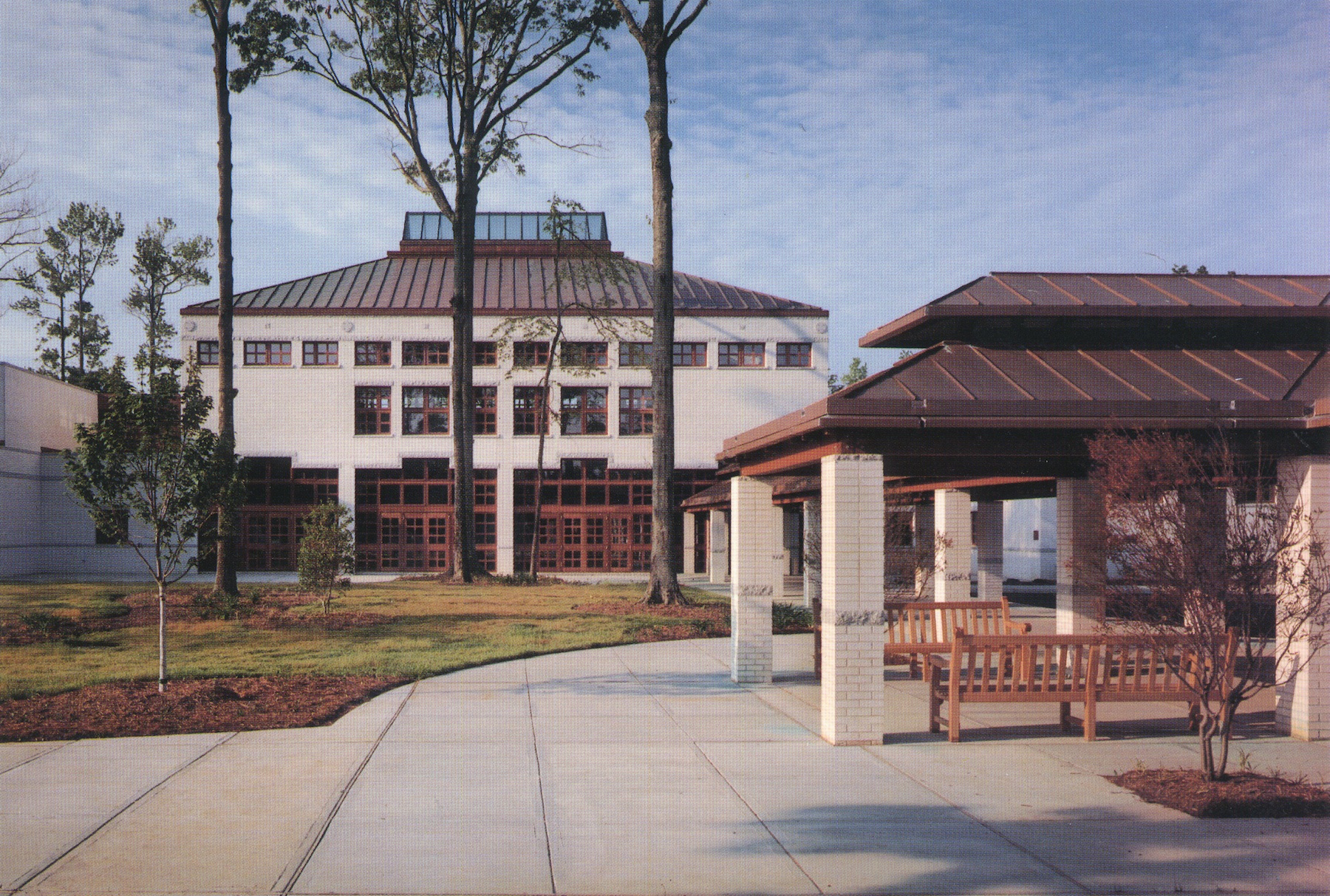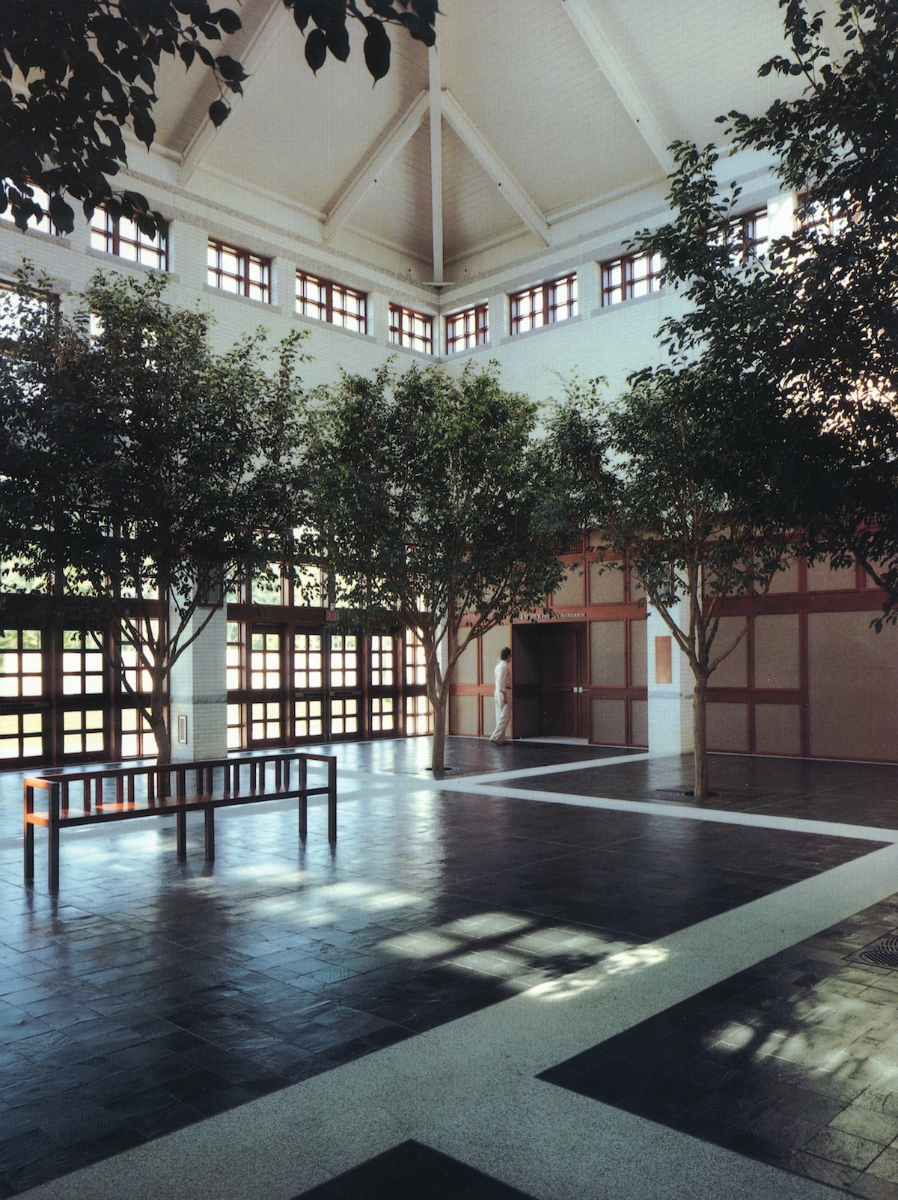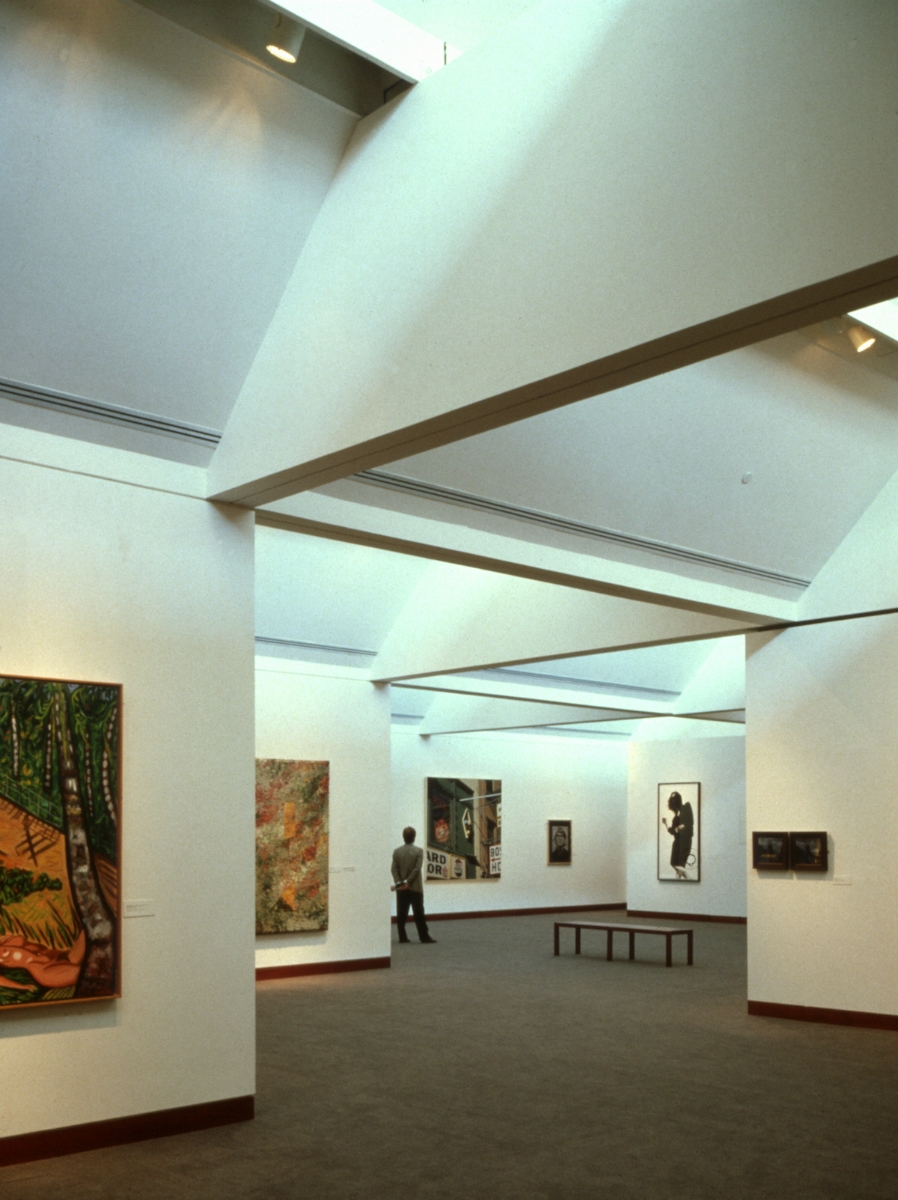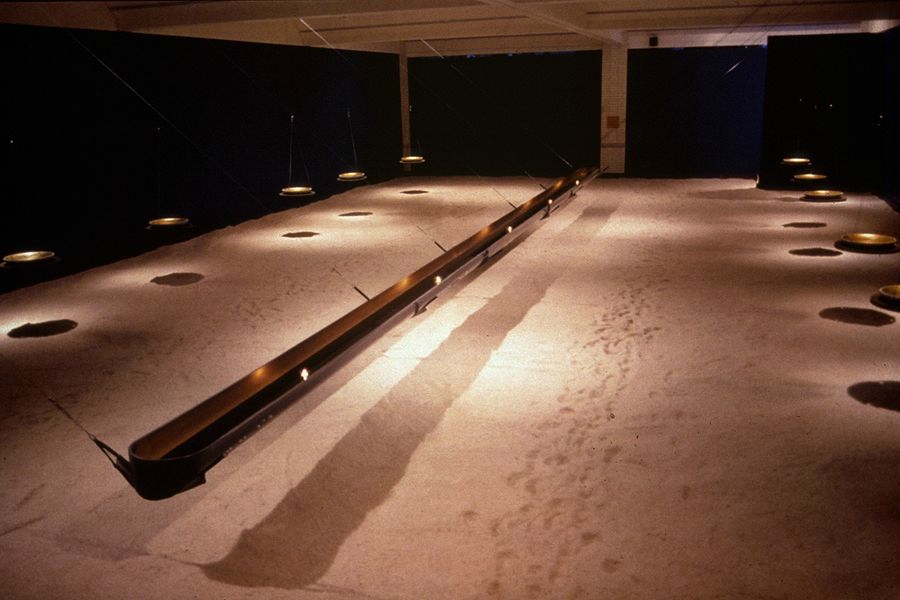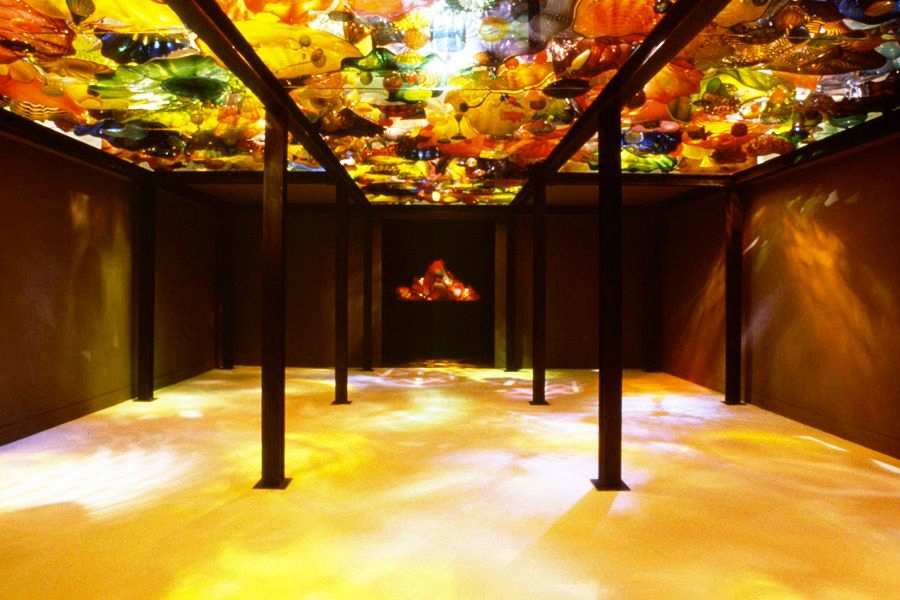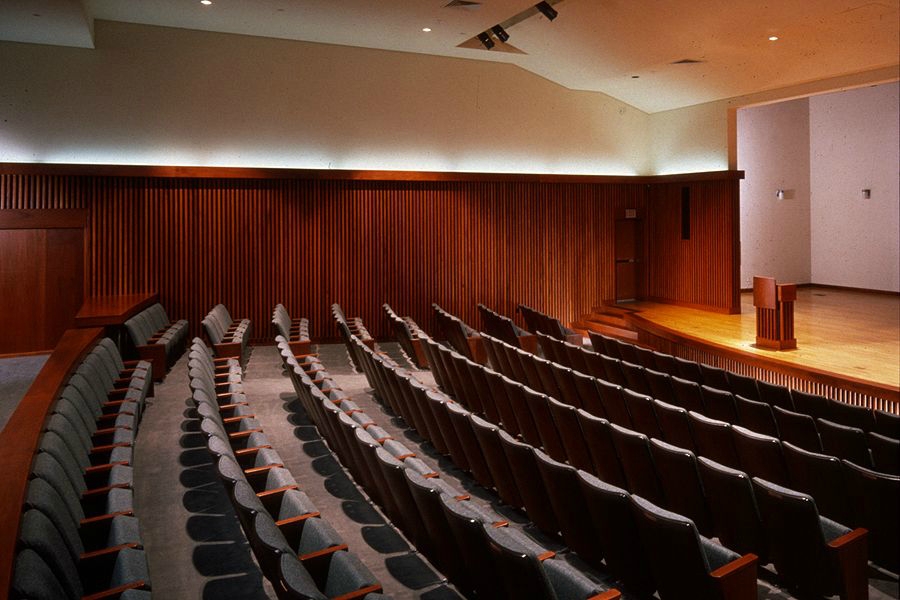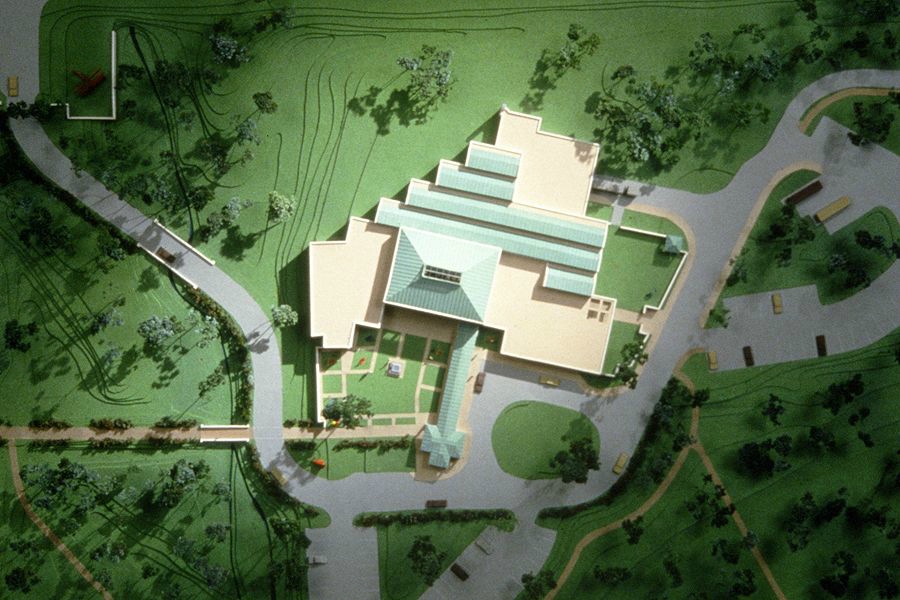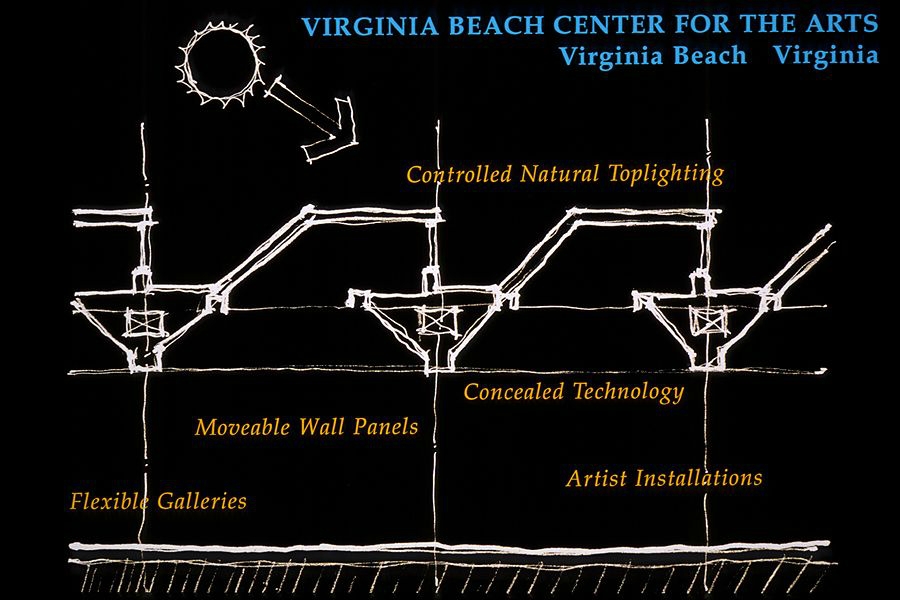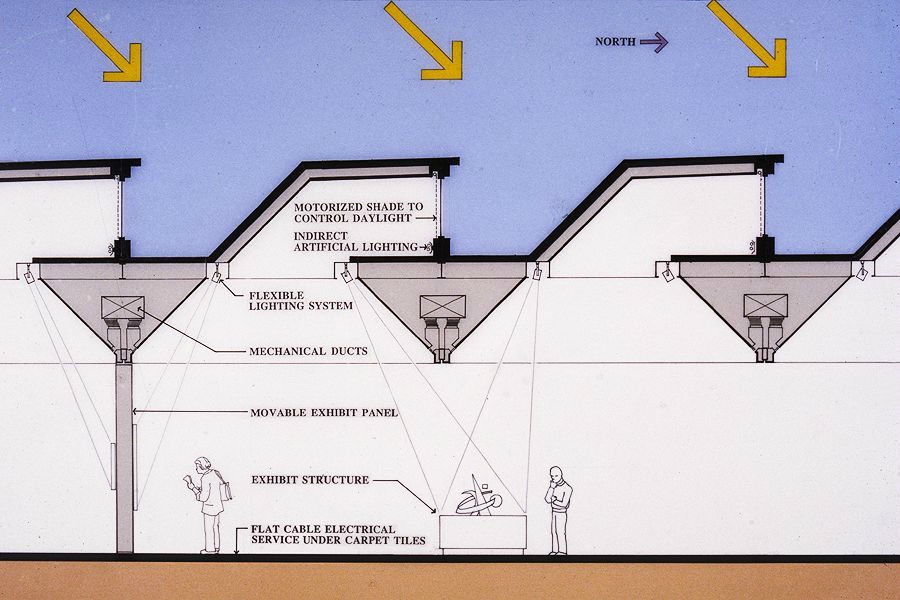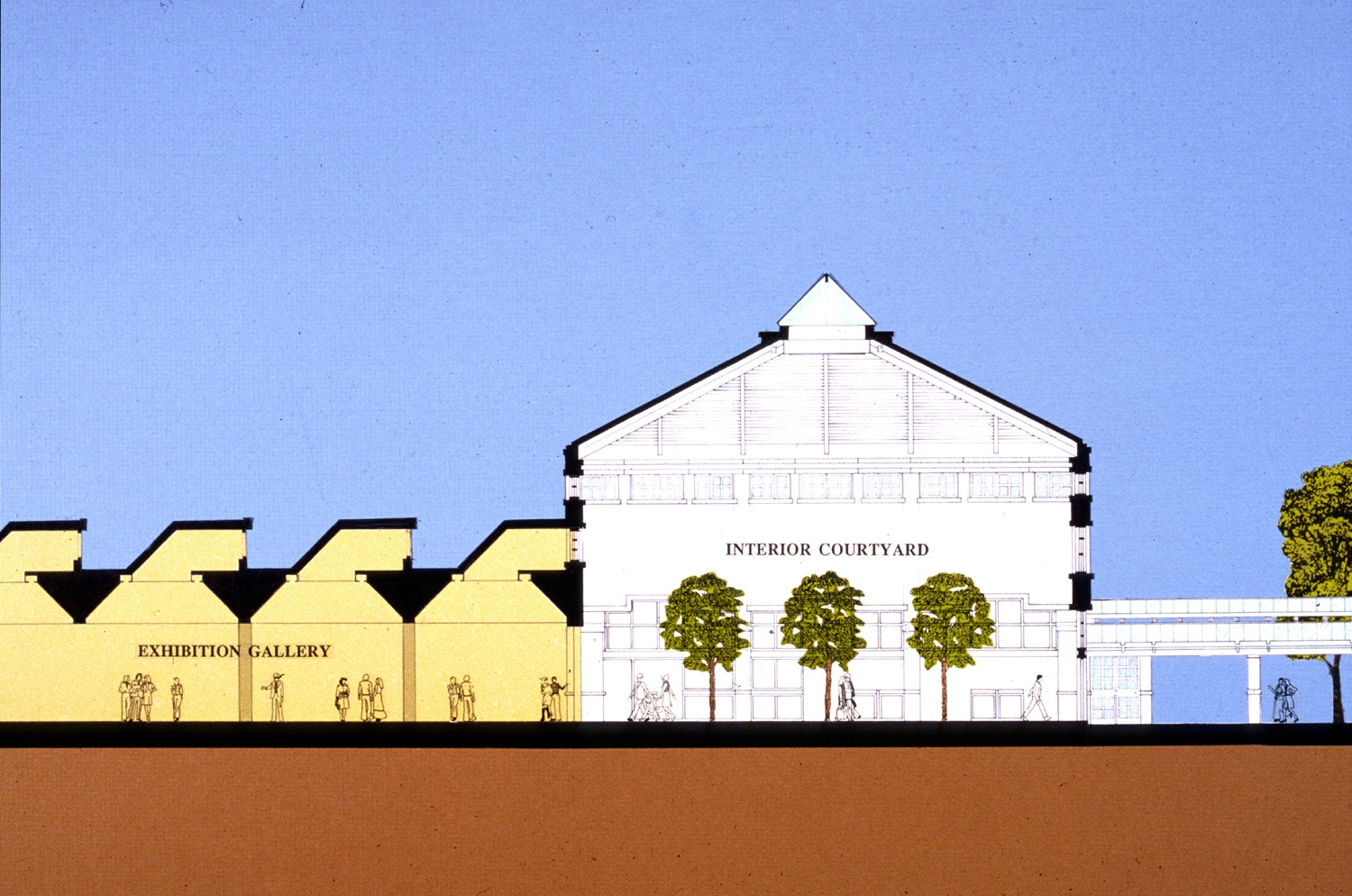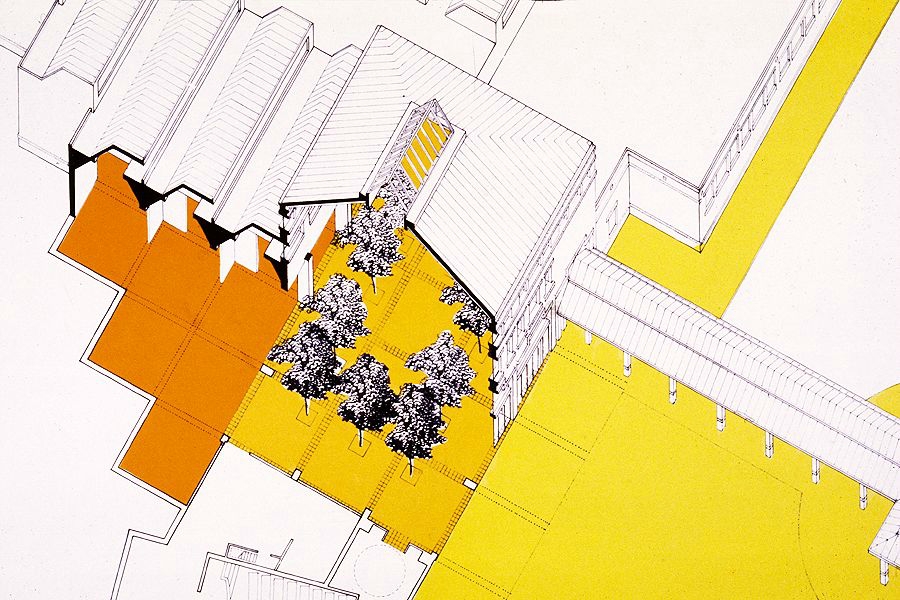Virginia Museum of Contemporary Art
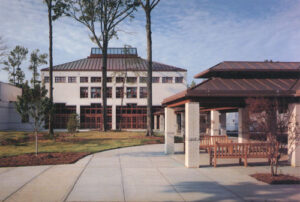
Location: Virginia Beach, VA
Role: Architect for new art museum; Led team of architects, engineers and specialist museum consultants
Program: Changing art galleries, exhibit support areas, lobby, 240-seat auditorium, gift shop, function spaces, art studios, outdoor ceramics work area and offices
Building Area: 38,500 sf; Art Galleries: 6,300 sf
Status: Opened in 1989
Description:
The Virginia Museum of Contemporary Art (MOCA) is a non-profit institution which exists to foster awareness, exploration and understanding of significant art of our time. Through excellence and diversity in their exhibitions and educational programming, MOCA stimulates individual thinking and dialogue throughout the community.
Regularly changing exhibitions feature painting, sculpture, photography, glass, video and other visual media from internationally acclaimed artists as well as artists of national and regional renown. By balancing its four primary activities—gallery exhibitions, studio art classes, educational outreach programs and outdoor art shows—MOCA seeks to involve a diverse regional public in the rich and active language of contemporary visual art.
To provide the flexibility necessary to accommodate the Museum’s monthly changing exhibitions, the column-free galleries were equipped with a custom designed system of movable wall panels, permitting spaces of various sizes to be arranged as needed. Daylight entering through clerestory monitor windows can be regulated by precisely-controlled motorized solar shades to exclude all natural light if extremely sensitive media is to be displayed.
The functional aspects of the building have been carefully planned. The exhibition galleries are serviced through a 12 ft. by 12 ft. roll-up door opening to a large receiving area surrounded by the required exhibit support facilities, including a crate and exhibit prop storage area, workshop, painting area, exhibit staging area and an art storage area. Humidity and temperature are tightly controlled in the galleries to provide the necessary protection for the various art objects stored and displayed.

